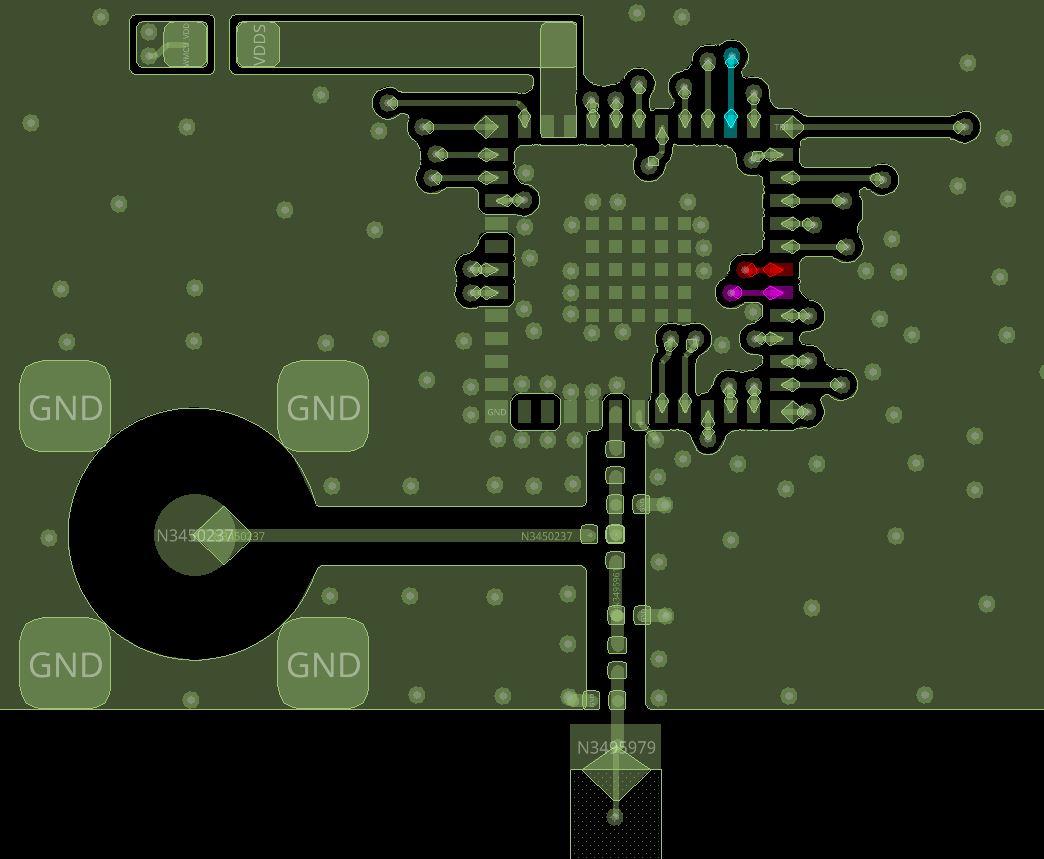SWRA797 September 2024 CC1312PSIP
3.1.4 Maximum Track Length
For a 4-layer design, the maximum track length on the top and bottom layers that are outside the Faraday cage can not be longer than 8mm since the majority of the routing can be done on the third layer.
Note: For a 2-layer design, the maximum track length
recommendation of 8mm can be difficult to follow since the main routing is done
mainly on the top layer. If the tracks on the top layer exceed 8mm in length, then
these tracks must have a GND directly underneath on the bottom layer to minimize the
unwanted radiation of the long tracks that exceed 8mm.
 Figure 3-8 Maximum Track Length on Top
Layer of a 4-Layer PCB and GND Via Placement
Figure 3-8 Maximum Track Length on Top
Layer of a 4-Layer PCB and GND Via Placement